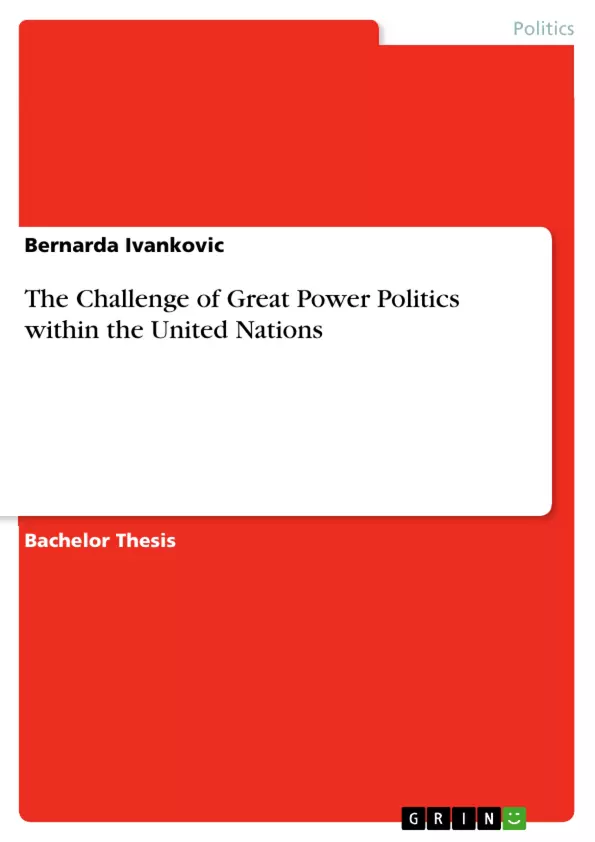After the Second World War, Europe was demolished. Over 60 million people were killed, industry was destroyed, and above all the war induced deep moral degradation. While the world struggled to recover from the desolation of the war, a new global organization, the United Nations, was established, its main purpose was and still is to ensure peace and security within the international community and chiefly to avoid a third world war.
Over the past decades, the United Nations and its humanitarian interventions have been an interesting and important theme, hence more literature is being written on this topic. However the effectiveness of the Security Council at executing international peace through humanitarian interventions seems to be a relatively neglected area, therefore this field is the focus of my dissertation. The importance of the United Nations on the global stage is indeed a popular topic which has undergone much research. Nevertheless, the mismatch of attitudes between the great powers within the Security Council concerning different humanitarian interventions but with similar origins still has not been sufficiently explored. In this dissertation, I intend to fill a gap in this area of research, which is not only a globally important issue, but also a topic that has been under-researched.
The aim of this dissertation is to shed light on challenges that the United Nations faces, with an emphasis on the ethics of humanitarian intervention. In order to find an appropriate answer to this question, I will examine two case studies, which have been chosen as examples of two different UN reactions to a crisis. The first case study is NATO’s military operation against the Federal Republic of Yugoslavia during the Kosovo war in 1999, the second is a non-combat military operation in Syria. While considering these two case studies, it is also crucial to constantly keep in mind the motives and ideas that lead to the development of the UN and what the UN is supposed to represent. In order to understand this, I will first provide a brief history of the UN, and detail how it is structured, and most notably, the Charter of the UN as a source of right. Possible limitations of this project could be an inability to come to the right conclusions and find a universal solution to these kinds of crises.
Inhaltsverzeichnis (Table of Contents)
- Introduction
- The Development, Structure, Goals and Principles of the United Nations
- Historical background
- The Fundamental Political Problems of the UN
- An Overview of the Structure of the United Nations
- Goals and Peacekeeping Principles of the UN
- Main goals of the UN
- Peacekeeping Principles of the UN
- Article 2 of the Charter of the UN
- Case Study 1 - NATO's military operation against the Federal Republic of Yugoslavia during the Kosovo war in 1999
- A Brief history of NATO's military operation in the Kosovo war
- North Atlantic Treaty Organization (NATO)
- Events Arranged in Chronological Order
- Consequences of NATO's War on Yugoslavia
- A Brief history of NATO's military operation in the Kosovo war
- Case study II – a non-combat military operation in Syria
- A Brief History of the Syrian crisis
- The Arab Spring
- A Brief history of the Syrian crisis II
- Consequences of the Syrian civil war
- A Brief History of the Syrian crisis
- Discussion of two case studies
- The Same Situations with Differing reactions
- Violation of international law
- Great powers within the Security Council
Zielsetzung und Themenschwerpunkte (Objectives and Key Themes)
This dissertation aims to analyze the effectiveness of the United Nations Security Council in executing international peace, particularly through the lens of humanitarian interventions. The research focuses on the ethical implications of such interventions and the role of great powers in shaping the Council's response to crises.
- The historical development and structure of the United Nations
- The goals and principles of the UN, particularly in relation to peacekeeping
- Case studies of two different UN reactions to crises: NATO's military operation in Kosovo and a non-combat operation in Syria
- The influence of great powers within the Security Council on decision-making regarding humanitarian interventions
- The ethical challenges of humanitarian intervention
Zusammenfassung der Kapitel (Chapter Summaries)
The dissertation begins by tracing the historical background of the United Nations, highlighting its origins after the Second World War and its relationship to the League of Nations. The chapter then delves into the structure of the UN, emphasizing the role of the Security Council and its inherent power dynamics.
The first case study examines NATO's military operation against Yugoslavia during the Kosovo War. The chapter details the historical context, key events, and the consequences of NATO's intervention. The second case study focuses on a non-combat military operation in Syria, examining the historical background of the Syrian crisis, the role of the Arab Spring, and the consequences of the ongoing civil war.
The final chapter delves into a comparative analysis of the two case studies, examining the contrasting responses of the Security Council to similar situations and exploring the broader implications of these decisions. The chapter concludes by discussing the challenges of international law, the influence of great powers, and the ethical dilemmas inherent in humanitarian interventions.
Schlüsselwörter (Keywords)
The core keywords of this dissertation include: United Nations, Security Council, humanitarian intervention, peacekeeping, great power politics, ethics, international law, NATO, Kosovo War, Syria, Arab Spring, case studies, comparative analysis.
- Quote paper
- Bernarda Ivankovic (Author), 2015, The Challenge of Great Power Politics within the United Nations, Munich, GRIN Verlag, https://www.grin.com/document/299351



